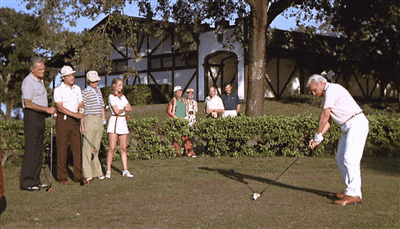Over the Top: A Common Cause of the Slice
- Jared

- Mar 29, 2020
- 2 min read
Updated: Oct 18, 2024
Over-the-Top is a common swing characteristic seen among high handicap golfers and it is one of the primary causes of the slice. According to research by the Titleist Performance Institute, 44% of amateurs come over the top. This swing characteristic usually occurs because of the upper body becoming over dominant during the downswing. As a result, the club is thrown outside of the intended swing plane, with the club head approaching the ball in an out-to-in motion. If this is combined with an open club face this will result in a slice.
How to identify if you come over the top or not?
To identify if you come over the top you want a view of your swing from down the line (behind you). Start at the address position and draw a line up the club shaft and extend it past the shoulder. Now advance the video until the upper part of your lead arm is parallel to the ground. Draw a second line from down the length of the club to the ground. There will be an area between the two lines. This is known as the slot. Ideally the club should stay inside this area during the swing. If it comes above the the line this is "over the top". The picture on the left is showing a player who is staying in the slot, while the picture on the right is showing a golfer who is coming over the top.
How is this related to the body?
While coming over the top can certainly be due to several mechanical issues, there is often an underlying physical issue present with this. These include:
1. Inability to disassociate the lower body from the upper body is very strongly associated with this swing characteristic. This can best be assessed through the pelvic rotation test.
2. Limited hip mobility: good mobility in the hips is needed to properly transfer your energy to the lead leg to initiate the swing. If this is limited, it might be easier for the upper body to initiate the swing
3. Limited spine mobility: the ability to create separation between the lower body and upper body also requires good rotational mobility of the spine
4. Poor core control: core control plays a significant role in maintaining posture and transferring energy from the lower body to the upper body effectively.
5. Decreased leg strength and power: any significant decrease in lower body strength and power can cause the upper body to become overactive in the swing.
Contact us to learn more about your body swing connection to help take your game to the next level.














Comments